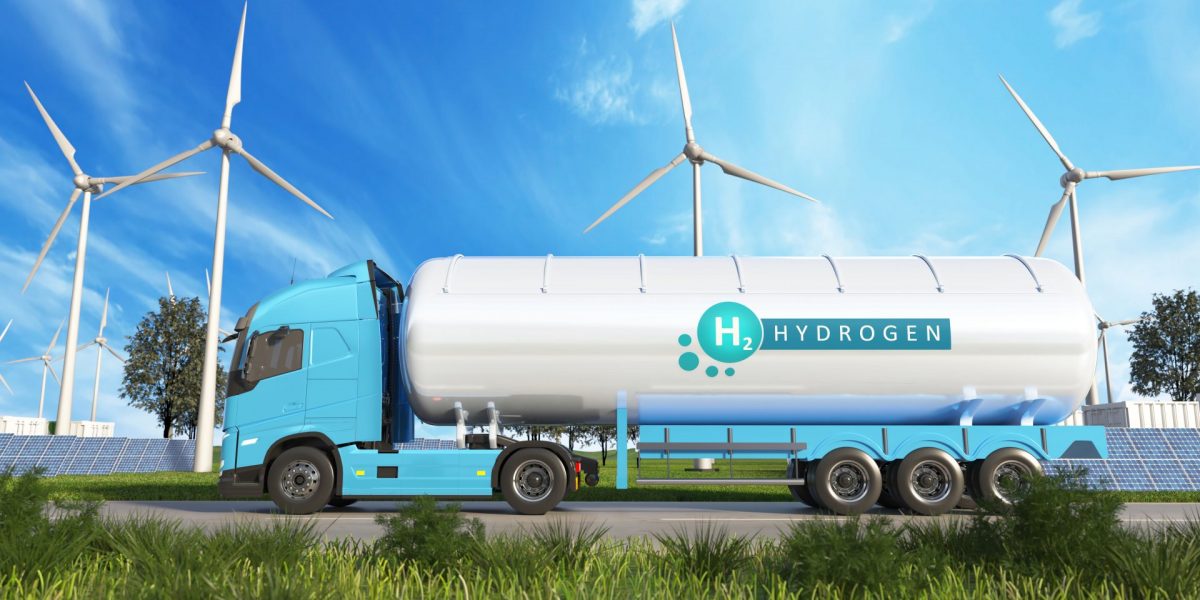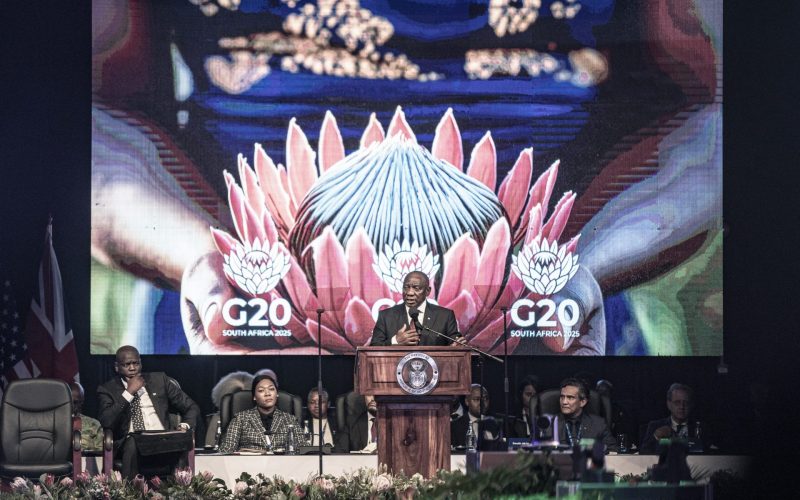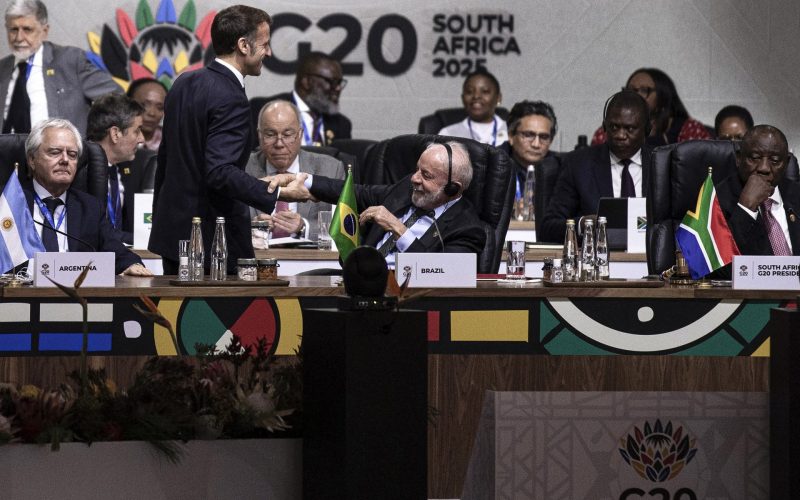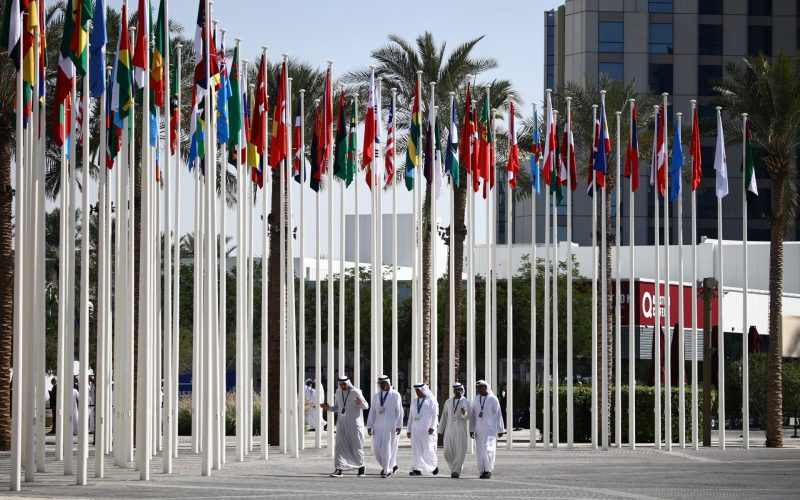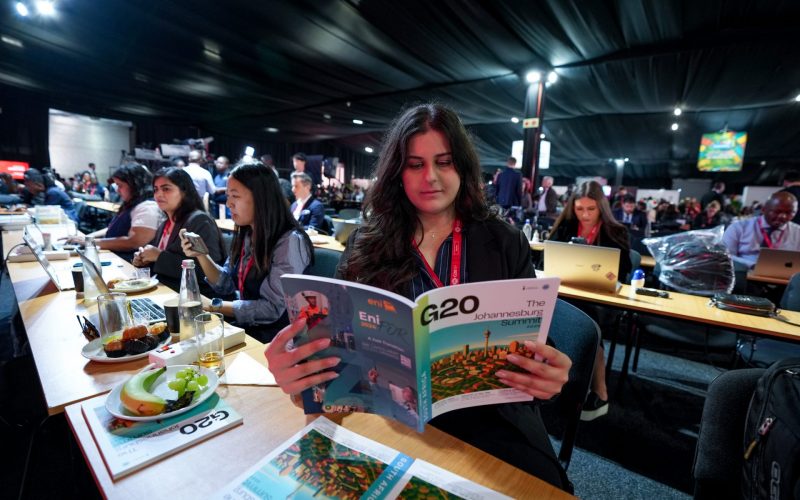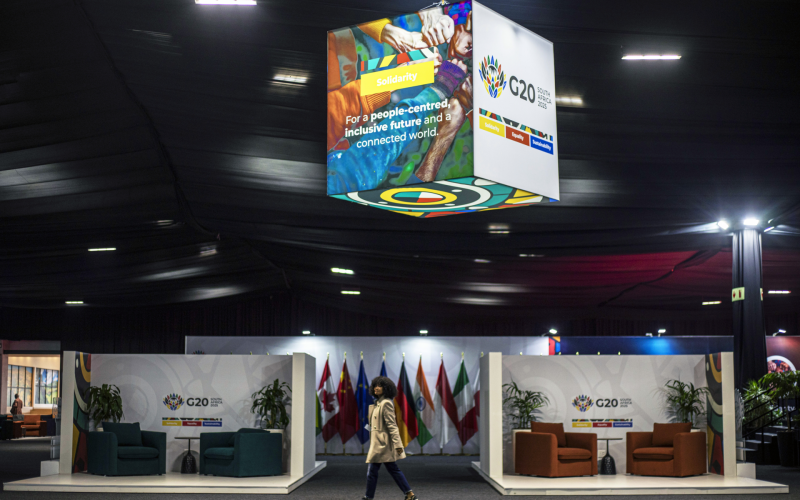Recommendations
- The South African government should use hydrogen diplomacy to attract investment for green corridor development and public-private partnerships in infrastructure.
- The South African government and international partners should develop a regulatory framework to facilitate green hydrogen trade.
- The South African government should implement a community-centric social acceptance strategy for green hydrogen projects.
Executive summary
South Africa can best develop its green hydrogen ecosystem by prioritising trade-focused investments. This approach allows the country to capitalise on current international interest in green hydrogen, generating momentum and resources and building the necessary infrastructure and legislation. Simultaneously, trade-focused projects must deliver meaningful local benefits from the outset, not just in green hydrogen and its derivatives, but also laying the groundwork for a robust domestic market and ensuring socio-economic gains are felt locally in the short, medium and long term. A recent World Bank report analyses how South Africa can leverage trade for inclusive growth and resilience. The report suggests that reforms to promote trade can support robust, inclusive and green economic growth following years of unprecedented supply-chain disruptions during the COVID-19 pandemic and ongoing uncertainties related to increasing geopolitical tensions and climate change. This policy brief recommends ways to harness the green hydrogen hype as a catalyst for local development by focusing on trade.
Introduction: The green hydrogen hype
Renewable hydrogen and hydrogen-derived commodities are expected to play a significant role in the global energy transition, accounting for 14% of final energy consumption by 2050.1IRENA, Geopolitics of the Energy Transformation: the Hydrogen Factor, (Policy Research Report, 2023). As such, hydrogen diplomacy is becoming an important part of many countries’ foreign policies and multilateral engagements especially given its expected influence on global energy security and trade. However, despite the widespread enthusiasm surrounding green hydrogen, the reality is that only a small fraction of announced global production projects have come to fruition (just 7% in 2023).2Adrian Odenweller and Falko Ueckerdt, “The Green Hydrogen Ambition and Implementation Gap”, Nature Energy 10, (2025): 110–123. A prime example is Sasol in South Africa, which allocated ZAR3South African rand.350 million ($18,5 million) for a pilot green hydrogen project in the Free State province, only to pull out and refocus on coal production, citing insufficient commercial viability.4Paul Burkhardt, “Sasol Plots New Route to Emission Goal after Refocusing on Coal”, Bloomberg, January 22, 2025. This occurred despite South Africa’s ideal conditions for the generation of solar and wind energy, the primary renewable sources for green hydrogen production.
The high cost of green hydrogen production,5C. McGregor, B.D. Young and D. Hildebrandt, “Risk Assessment Framework for Green Hydrogen Megaprojects: Balancing Climate Goals with Project Viability”, Applied Thermal Engineering 262, (2025). and a consequential lack of domestic demand, creates a significant barrier to its viability, making the substantial upfront investment risky. Green hydrogen-based fuels are more expensive than their fossil fuel counterparts. However, estimates from Industrial Development Corporation of South Africa suggest that the country has the potential to become the second-lowest cost producer of green hydrogen globally, trailing only Chile.6Government of South Africa, Department of Trade, Industry and Competition, Briefing by the dtic on the Green Hydrogen Commercialisation (GHC) Strategy and other Green Fuels, (the dtic,19 November 2024). South Africa is further endowed with abundant renewable energy resources and the space to deploy large-scale renewable development.
This competitive advantage means that, even with the distance involved, importing green hydrogen from South Africa could be more economical for countries in Europe and for Japan than producing it domestically.
South Africa is pursuing international partnerships to develop its green hydrogen sector. In September 2024, the EU announced two grants totalling EUR7Currency code for euro.32 million ($34,7 million) to establish a regional green hydrogen hub in Southern Africa. These grants aim to attract additional funding to enhance the country’s port, rail and pipeline infrastructure. But they represent less than 0.2% of the estimated ZAR410 billion ($21,9 billion) needed to produce the country’s target of a million tonnes of green hydrogen by 2030.8Bruce Douglas Young and Craig McGregor, “SA’s Green Hydrogen Hub Will Cost Billions, Not Millions”, (University of the Witwatersrand, September 13, 2024). The green hydrogen sector is listed as one of the three priority areas in the Just Energy Transition Investment Plan (JET-IP), with some of its funds already being channelled to support policy processes such as the hydrogen valley. However, only 4% of the JET-IP funds are grants with the majority expected to be loans, making the financing of the sector problematic from a debt sustainability perspective. In September 2024, the International Monetary Fund cautioned the South African government on its debt situation, recommending it pursue ambitious fiscal consolidation to restore the sustainability of its public finances.9IMF, “IMF Executive Board Concludes Post Financing Assessment Discussions with South Africa”, press release no. 24/317 , September 4, 2024.
South Africa has also sought partnerships in the East. In December 2024 Minister of Electricity and Energy Kgosientsho Ramokgopa visited Japan in a trip characterised as a crucial step in South Africa’s strategy to become a leading global producer and exporter of green hydrogen. This partnership would align with Japan’s own ambitious net-zero targets. While South Africa’s efforts to secure international green hydrogen partnerships are promising, they have also raised concerns among civil society groups. These groups worry that prioritising export-oriented green hydrogen production could further strain the electricity grid, disadvantaging South Africans. That said, because of stringent international standards, regulations and certification processes, green hydrogen production, particularly for export, cannot rely on existing electricity generation, regardless of the source. It will require additional, dedicated renewable energy sources. The Green Hydrogen Commercialisation Strategy for South Africa and the Hydrogen Society Roadmap for South Africa 2021 address this by advocating a dual-track approach: developing the sector for domestic use and export.
Although public finance organisations such as the European Investment Bank, the KfW Development Bank and the World Bank are funding new infrastructure projects linked to the green hydrogen ecosystem (roads, transmission lines, desalination plants etc.), it is increasingly difficult to attract financing for infrastructure-focused only on green hydrogen.10Christopher Cassidy and Rainer Quitzow, “Green Hydrogen Development in South Africa and Namibia”, Research Institute for Sustainability, December 2023
Against this background, this policy brief argues that South Africa’s green hydrogen development should serve as a catalyst for local socio-economic growth, not just short-term exports. It should lay the foundation for a robust domestic market and local value chains in the future. Green hydrogen production must not come at the expense of the domestic population or deplete scarce resources, but rather complement industrial development plans.11Marina Blohm and Franziska Dettner, “Green Hydrogen Production: Integrating Environmental and Social Criteria to Ensure Sustainability”, Smart Energy 11, (2023). As Sasol CEO Simon Baloyi notes, if critical infrastructure is built ‘you almost get green hydrogen for free’ – this should be South Africa’s priority.12Paul Burkhardt, “Sasol Plots New Route”. This policy brief examines how investments in the three enablers – physical, institutional and social – identified in a recent World Trade Organisation and International Renewable Energy Agency report on facilitating global trade in renewable hydrogen and its derivatives, can generate co-benefits for South Africans.
Green trade enablers
Physical infrastructure
South Africa’s ambition to become a leading green hydrogen exporter faces a major hurdle in its inefficient ports. Operational challenges such as poor maintenance and theft have crippled the country’s coal exports, which fell by 30% in 2023 compared to 2018 despite soaring global prices.13World Bank, Safety First: The Economic Cost of Crime in South Africa, Economic Update (International Bank for Reconstruction and Development, 2023). In the World Bank’s Container Port Performance Index, the ports of Gqeberha, Durban and Cape Town ranked between 291 and 344 of 348 global ports.14World Bank, The Container Port Performance Index 2022: A Comparable Assessment of Performance based on Vessel Time in Port, (International Bank for Reconstruction and Development, 2023). This inefficiency has not only hampered coal trade but all industries reliant on these ports, significantly affecting overall economic growth. In 2023, the South African Association of Freight Forwarders estimated that port congestion cost the country at least ZAR 124 million ($6,57 million) a day in direct and indirect costs.15Terrence Creamer, “SAAFF Warns of Rising Port-Congestion Costs”, Engineering News, November 22, 2023.
Given the country’s restricted fiscal space, upgrading ports requires innovative public–private partnerships. This is acknowledged in the Roadmap for the Freight Logistics System in South Africa, the National Logistics Crisis Committee established in 2023. One avenue for attracting innovative public–private partnerships is marketing South Africa’s green corridor potential. Beyond its green hydrogen export capabilities, South Africa could also emerge as a key supplier of green shipping fuels to global fleets. By 2050, hydrogen is expected to account for about 64% of global shipping fuel mix to reduce its carbon footprint.16IMO, Fourth IMO Greenhouse Gas Study, (International Maritime Organization, 2021). A recent report estimates that ships visiting South Africa’s eight commercial ports could demand about 56 000 tonnes of hydrogen by 2030, rising to about 530 000 tonnes by 2050.17Roci Salgmann, Maximilian Weidenhammer and Dominik Englert, Creating a Green Marine Fuel Market in South Africa, (International Bank for Reconstruction and Development, 2024). In addition, the country could supply ships passing the Cape of Good Hope – a major maritime waypoint. By 2050, this bypass traffic could add a substantial 1.3 million tonnes of green hydrogen demand.18Salgmann et al., “Creating a Green Marine Fuel Market”. But to tap into this potential, South Africa will need to invest in port equipment, such as refuelling stations, bunkering infrastructure and pipelines to transport hydrogen. The World Bank has supported South Africa in exploring the requirements for establishing green marine bunker fuel value chains at the ports of Boegoebaai and Saldanha.19Salgmann et al., “Creating a Green Marine Fuel Market”.
The World Bank has emphasised the potential of international shipping to catalyse South Africa’s green hydrogen economy. Beyond this, investing in the green shipping fuel industry would bring secondary economic benefits through improved port efficiency and infrastructure. South Africa should expand its green hydrogen diplomacy to include investment in green corridors with a focus on green marine fuel. This could fall under the EU’s Global Gateway initiative, which aims to promote investment in critical infrastructure, including transport and port facilities, as well as the establishment of green corridors along shipping routes around Africa. The shipping industry in Europe has pressured the EU to intensify investments in Africa’s green corridor,20Naida Hakirevic Prevljak, “Shipping Industry Urges EU to Support Green Transition by Investing in Africa,” Offshore Energy, August 26, 2024. driven by the global emissions pricing mechanism and the pressure to achieve net-zero greenhouse gas emissions by 2050.
South Africa’s development of green hydrogen export capacity has the potential to drive regional integration. A key step in this direction is the 2024 Memorandum of Understanding between South Africa and Namibia to explore a cross-border green hydrogen pipeline, with a feasibility study originally due in January 2025.21Anne Laure Klein, “MOU Signed for Namibia-South Africa Green Hydrogen Corridor,” May 20, 2024, Energy Capital & Power, https://energycapitalpower.com/mou-signed-for-namibia-south-africa-green-hydrogen-corridor/. This pipeline could become Africa’s first cross-border hydrogen infrastructure, fostering increased trade in Southern Africa.
While competition may arise – particularly in green ammonia bunkering with Walvis Bay and South African ports vying for market share – there is significant opportunity for regional cooperation. Namibia’s Green Hydrogen and Derivatives Strategy envisions an integrated green ecosystem across Southern Africa with shared ports, pipelines and transmission networks linking Namibia, South Africa, Botswana, Zambia and Angola. It also proposes exporting excess power from the Kharas region to the Southern Africa Power Pool to alleviate South Africa’s energy shortages. However, this remains a long-term goal as Namibia currently relies heavily on electricity imports from South Africa and Zambia, with limited high-voltage transmission lines posing significant bottlenecks for large-scale grid- based green hydrogen generation.22Sören Scholvin and Linus Kalvelage, “New Development Paths through Green Hydrogen?: an Ex-Ante Assessment of Structure and Agency in Chile and Namibia,” Energy Research & Social Science 120, (2025).
While South Africa and Namibia will likely compete in green hydrogen exports, importers are expected to diversify their suppliers. Trilateral discussions between Namibia, South Africa and potential importers should therefore focus on integration and shared infrastructure. A collaborative approach would enable both countries to scale production, while reducing risks and investment costs for importers by avoiding redundant infrastructure. The African Development Bank with its growing emphasis on cross-border infrastructure could be a key partner in facilitating such cooperation. Green hydrogen production requires substantial renewable energy yet South Africa’s electricity grid, particularly in the Cape provinces, is constrained. Unless electrolysers are co-located with renewable sources, projects aiming to come online soon will struggle to access new energy through grid wheeling. A robust transmission grid is essential to deliver green electricity to hydrogen production sites. The National Transmission Company’s move to open the market to private companies is a positive step.23Thando Maeko, “National Transmission Company’s Pilot Power Project to go to Market”, Business Day, January 22, 2025. In addition, upgrading the grid in preparation for a green hydrogen economy is a ‘no regret’ investment: even if the sector does not scale as expected, a stronger grid will benefit the country, unlike more specialised infrastructure, such as hydrogen pipelines, which risk becoming stranded assets.24Kirstin Engel, “‘Effectively on Ice’:Grid Capacity Constraints Jeopardise Some renewable Energy Projects”, Daily Maverick, June 22, 2023.
Institutional and regulatory frameworks
A key consideration in the commercial viability of green hydrogen production, especially for export, is the presence of off-take agreements. According to BloombergNEF, only 10% of planned clean hydrogen capacity planned by 2030 has confirmed buyers creating a classic ‘chicken-and-egg’ conundrum.25BloombergNEF, “Hydrogen Off-Take is Tiny But Growing”, (Blog) November 14, 2023, https://about.bnef.com/blog/hydrogen- offtake-is-tiny-but-growing/#:~:text=Many%20companies%20have%20plans%20to,a%20buyer%2C%20BloombergNEF%20 research%20shows. This lack of demand poses a major risk to the sector’s growth. South Africa’s green hydrogen research and development sector should prioritise the upstream value chain, specifically fuel cells and electrolysers, including original equipment manufacturing. While small-scale projects such as Hydrox Holdings, Bambili Energy and HySA are in the feasibility stage, there is currently no commercial production of fuel cells or electrolysers in the country. Scaling from pilot to commercial production will require international investment. A major gap is the absence of a programme to develop local electrolyser suppliers or attract foreign manufacturers with incentives to create domestic backward linkages. A recent UN Conference on Trade and Development technology assessment highlights South Africa’s technical potential in electrolyser development but questions its future economic competitiveness, underscoring the need for comprehensive socio-economic feasibility studies to guide targeted research and development investment.26UNCTAD, Electrolysers for Green Hydrogen Production Pilot Technology Assessment in South Africa, (UN Conference on Trade and Development, 2024).
At the same time, the role of European companies interested in the market must be clearly defined to ensure they complement rather than displace developing domestic producers.27Pinky Radebe and Steven Hofmann, Electrolyser Market Overview 2023, (Green Hydrogen South Africa, April 2023). Once a clear investment framework is in place to attract foreign investment while fostering domestic industrial growth, existing initiatives such as the GET.invest programme and the AU-EU Innovation Programme can help channel funding. With their focus on co-creation, these programmes have the potential to develop local green hydrogen industries.
With a clear strategy to develop local electrolyser and original equipment manufacturing supply chains, South Africa has the potential to become a regional supplier meeting the continent’s growing demand for green hydrogen. Africa’s hydrogen production potential is estimated at 50 million tonnes a year by 2035, with applications in decarbonising hard- to-abate sectors such as steel and fertiliser as well as for export.28EIB, New Study Confirms €1 Trillion Africa’s Extraordinary Green Hydrogen Potential, (European Investment Bank, International Solar Alliance and African Union, 2022). However, the continent lacks a robust regulatory and legal framework outweighing even challenges such as high production costs, limited infrastructure and constrained financing.29Ephraim Bonah Agyekum, “Is Africa Ready for Green Hydrogen Energy Takeoff? A Multi-Criteria Analysis Approach to the Opportunities and Barriers of Hydrogen Production on the Continent”, International Journal of Hydrogen Energy, 49, Part D (2024): 219–233. Concerted effort is needed to strengthen Africa’s regulatory environment, particularly to facilitate intra-African trade across the green hydrogen value chain. Mechanisms such as the African Continental Free Trade Agreement (AfCFTA) offer a platform to drive this process.
Significant concerns for off-takers include the lack of regional alignment on certification compliance. Given the ambition to interconnect green hydrogen value chains across the southern corridor, certification policies must be standardised regionally and with international import partners. Trilateral cooperation on green hydrogen certification – linking regional players with global markets – is essential. For example, aligning the Action Plan of the African Green Hydrogen Strategy with the Africa-EU Green Energy Initiative would be a strategic move. Under Action 19 of its Hydrogen Strategy, the EU has committed to ‘set out a cooperation process on renewable hydrogen with the African Union on the framework of the Africa-Europe Green Energy Initiative and provide technical assistance on hydrogen to African countries and regions’.30European Commission, A Hydrogen Strategy for a Climate-Neutral Europe, (European Commission, 2020), 23. The upcoming 7th EU–AU summit in 2025 presents a pivotal opportunity to advance a continent-to-continent agreement on green hydrogen certification.
Social enablers
The AfCFTA Investment Protocol offers an opportunity to address some of the challenges outlined above. By promoting green investment, facilitating technology transfer, establishing green investment standards and encouraging regional cooperation, the protocol could create a more favourable environment for investment. Consultation between the AfCFTA Secretariat, the Pan-African Trade and Investment Agency established under the protocol, interested African member states and international partners could provide a platform to identify specific challenges to investment in green hydrogen value chain projects and find collective solutions. Regional forums such as the African Green Hydrogen Alliance – comprising six coastal countries (Egypt, Kenya, Mauritania, Morocco, Namibia and South Africa) – provide a useful basis for engaging African nations on green hydrogen collaboration and certification.
Social acceptance is imperative to the success of South Africa’s green hydrogen economy, not only in communities where production occurs, but across the country. Without broad public support, progress is likely to face resistance. Concerns have already surfaced from the Richtersveld community regarding the lack of consultation and transparency in the Special Economic Zone access agreement.31Liezl Human, “Hydrogen Project Splits Richtersveld Community,” GroundUp, March 7, 2024. These early signals highlight the need for inclusive engagement and transparent decision-making from the outset.
Developing South Africa’s domestic green hydrogen value chain has enormous socio-economic potential. Benefits include lowering the carbon footprint of energy production, reducing overall greenhouse gas emissions, improving air quality and generating significant economic growth and job creation. In the longer-term, green hydrogen could become an important source of clean energy for the country.32Noluntu Dyantyi et al., “Exploring Economic Expansion of Green Hydrogen Production in South Africa”, Sustainability 17, no. 3 (2025): 901. Furthermore, it has the potential to advance Africa’s integration and industrialisation.
In 2024, the Corporate Europe Observatory published a report titled ‘The Scramble for Hydrogen in South Africa: How Frontline Communities are Impacted by the EU’s Green Extractivism.’33Pia Eberhardt, Pascoe Sabido and Belén Balanyá, The Scramble for Hydrogen in South Africa: How Frontline Communities are Impacted by the EU’s Green Extractivism, (Corporate Europe Observatory, December 2024). The report emphasises that although the political rhetoric coming from Europe is about a ‘win-win’ partnership and green hydrogen ecosystem, the voices of communities based in the regions earmarked for production have been absent from the debate. A key concern of these communities has been water scarcity and the negative impact production would have on an already water-stressed region. The production of green hydrogen requires significant water usage. Given, South Africa’s coastline, the identified regions for green hydrogen production in South Africa target desalinated seawater.
For example, the Coega Special Economic Zone has salt-producing plants that already discharge desalinated water as a by-product. South Africa has struggled with water scarcity concerns, which will only increase with climate-related impacts. While desalination plants are possible solutions, and the cost of desalination is a negligible fraction (1%) of total hydrogen production costs, the required infrastructure is expensive and energy-intensive.343SMedia, “Desalination + Green Hydrogen = Best Friends”, Infrastructure News, June 15, 2023. Experts suggest that the hydrogen industry could contribute to water resilience rather than undermine it, as it is better positioned to absorb the costs of desalination than communities or agriculture.353SMedia, “Desalination + Green Hydrogen”; Vatche Kourkejian, Green H2 as New Growth Pocket for Desalination – Once It Takes Off at Scale, (Roland Berger, December 4, 2023). Industrial synergy projects, such as the Hive Ecosystem in collaboration with Cerebos, are already demonstrating this potential.36Hive Energy, “World’s Largest Green Ammonia Plant for Nelson Mandela Bay, South Africa”, December 15, 2021, https://www.hiveenergy.co.uk/2021/12/15/worlds-largest-green-ammonia-plant-for-nelson-mandela-bay-south-africa/.
As noted in the previous section, potential importers of South Africa’s green hydrogen, primarily in Europe, have stringent sustainability requirements. These focus not only on the production process but also on avoiding negative impacts on local communities. For example, the German National Hydrogen Strategy notes that37BMWK, National Hydrogen Strategy Update, (Federal Ministry for Economic Affairs and Climate Action, 2023), 13. the increasing demand for hydrogen must not be allowed to impede or prevent local value added or climate action and environmental protection in developing and emerging countries, or allow human rights to be violated during production and transport. Hydrogen projects are not to hinder but must support the local energy transition, the expansion of renewable energies to improve the local energy supply and social-ecological and transformations of the local economy.
Investments from potential green hydrogen importers should be channelled towards desalination plants that include provisions for community benefit, aligning with their sustainability strategies. A potential policy could require green hydrogen producers to oversize their desalination plants as part of their licence to operate. The desalinated water could then be sold to water utilities at the electricity price.
Despite these agreements and eagerness to channel investment, it is crucial to translate and communicate these efforts to the affected communities to ensure civil society buy-in. This could be achieved through a public diplomacy campaign led by the South African government in collaboration with potential importing partners. In addition to knowledge-sharing initiatives, consultations should be held to ensure communities can actively contribute and voice their concerns. The Presidential Imbizo provides a platform for such consultations.
One key opportunity under the green hydrogen value chain is job creation. As with most industries impacted by the just transition, this requires concerted effort and cooperation with international partners. The GH2 start-up hub being implemented by the German Development Cooperation at Saldanha is one example of where this is happening. The hub will be a place where research institutions, funders, entrepreneurs and industry off-takers communicate and collaborate. A recent SAIIA project focused on exploring skills foresight within Technical and Vocational Education and Training and industry linkages aims to build anticipatory governance for South Africa’s future green hydrogen economy and value chains. The research emphasises the urgent need to integrate skills foresight to address industry–training mismatches. Namibia is expected to import high-skilled workers, and if South Africa can meet this demand, possibly through learner exchange programmes, it could contribute to regional integration.
Conclusion
In conclusion, South Africa’s pursuit of a green hydrogen economy presents a unique opportunity, not only for national development but also for regional integration and leadership. While export ambitions are important and will likely stimulate the establishment and growth of a South African green hydrogen economy, the focus must broaden to leverage green hydrogen as a catalyst for local development and a driver of regional cooperation and shared prosperity.
This policy brief highlights the importance of addressing the physical, institutional and social enablers of green hydrogen development to foster both international and regional partnerships. By prioritising green corridor development and strategic public–private partnerships in key infrastructure – such as ports, electricity transmission and water supply – South Africa can unlock its export potential while creating opportunities for neighbouring
countries to participate in the green hydrogen value chain. A robust domestic research and development and manufacturing strategy, concentrating on fuel cells and electrolysers, should be developed with a focus on knowledge sharing and regional collaboration.
Furthermore, leading the development of standardised green certification policies with regional players will enhance market access and establish South Africa as a key player in regional green hydrogen standards. Equally important is implementing a community-centric social acceptance strategy that addresses concerns about water scarcity and prioritises engagement. This approach should extend to cross-border communities, ensuring that the regional implications of green hydrogen projects are fully considered. By embracing these targeted policy recommendations with an emphasis on regional collaboration and shared benefits, South Africa can turn its green hydrogen ambitions into reality. This will drive economic growth, create jobs, support a sustainable energy future and strengthen the country’s position as a regional leader in the green transition. The opportunity is now, but strategic action is needed to harness the international hype and interest in green hydrogen, aligning it with South Africa’s development objectives to unlock its full potential for the country and the wider Southern Africa region.


